Cutting tools are some of the oldest, most important implements used by people to cut, shave, shape, carve, and butcher the things that make life enjoyable to live. Today these tools are still vital tools to own and utilize, both in day to day life, and in field craft. The four vital cutting tools for bush craft/field craft consists of a field knife, a machete, an axe, and a saw. We will look at the features to look for in each of these tools along with useful tasks that can be accomplished with each.
Field Knives
Field knives are full tang fixed blade knives, meaning that they cannot be folded (fixed) and have blade steel that runs from the tip of the blade to the end of the handle (full tang). They are typically 5-7 inches in blade length. There are a lot of options with knives, a lot of them featuring tactical or aesthetic design elements that are not useful, and are sometimes detrimental to use as a field knife.
What are knives needed for?
To understand what kind of knives will serve our field craft purposes best, it is useful to first learn some of the uses and skills that go along with their use. These skills are vital to know if you intend to spend any amount of time in the wilderness, remote and with little resupply.
One of the most vital functions a knife can perform is providing ignition for fires. They can be used for several tasks in camp, the first of which is making feather sticks. These sticks are used to create enough thin wood surface area to help get a fire started from a small initial flame. Feather sticks can be made from split pieces of wood or even sticks (around thumb sized). Feathering is done by gently pushing the blade into the wood, shearing a piece of wood away from the main section, while leaving it attached. You repeat this action until you have dozens of these which will resemble a feather (see illustration below). Feathering requires a sharp knife with good blade control. A knife that is too big will make this task difficult an a knife that is too small will require more focus. The blade needs to be sharp and nimble.
The second task related to fire making is reducing larger pieces of wood into smaller pieces. With a field knife, this is called batoning. Batoning uses the knife as a wedge and a baton (usually a blunt stick) to drive the knife through the wood, reducing the piece into halves. Through this method a log 4-5 inches in diameter can be broken down into sticks the size of a fat pencil, perfect for building heat in the fuel of a small fire and fueling a small discrete campfire for cooking and personal heat. Batoning also allows you to break down wood so that even when damp, will burn with less trouble than a thick log. It is all about the surface area of your fuel when building fires. Batoning requires a full tang knife and a knife featuring a flat profile to spine (the edge opposite of the cutting edge on your knife).
The last task that a field knife is vital for is sparking ferro rods. Ferro rods are amazing technology, allowing a knife to scrap it surface, creating a shower of sparks. Many people have been disappointed in the field after buying a ferro rod, taking the spine of their knife to it, and discovering they can only produce a few sparks or almost none at all. Why isn’t is as easy as it looks in books and videos? Simply, its because most knives are designed to be pleasing to the hand, meaning all sharp edges (with the exception of the cutting edge) are buffed and rounded to make them smooth and nice to handle. Field knives often do round edges, but not on the spine. A squared spine with sharp angles will throw a better, more reliable spark. That is what you want to look for.
The final feature we want to discuss, blade shape, relates to a lot of uses, but will become even more apparent when skinning and cleaning fish and game animals. Skinning or caping, requires smooth cuts to separate skin from flesh. This means that your blade edge needs to be curved, allowing a slicing motion throughout a cut. Tanto style blades are not good for this because they have angular edges that will sometimes cut too aggressively where the edges meet, damaging skin. A curved blade will be useful in a variety of situations, while blade shapes like a wharncliffe, tanto, or dagger, should be left as aesthetics suited to other knives, not field knives.

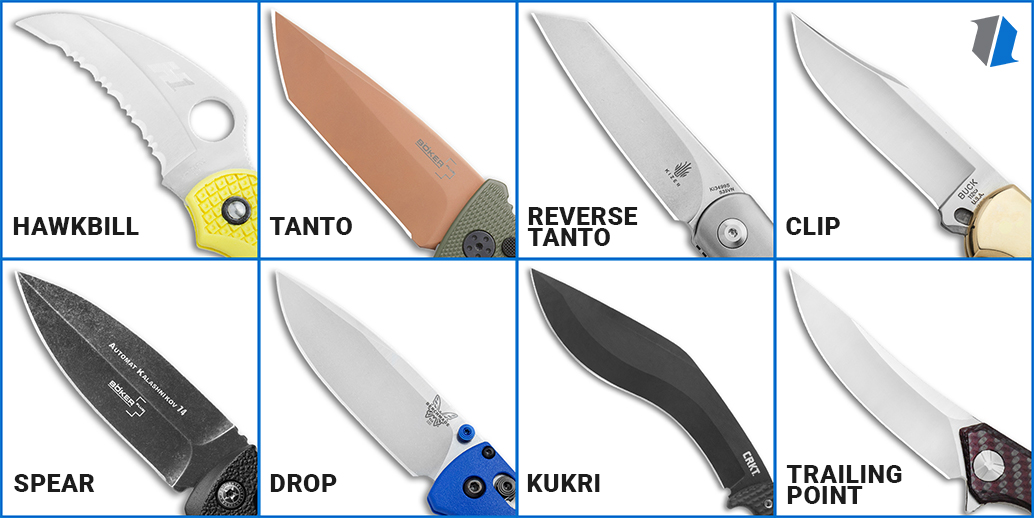
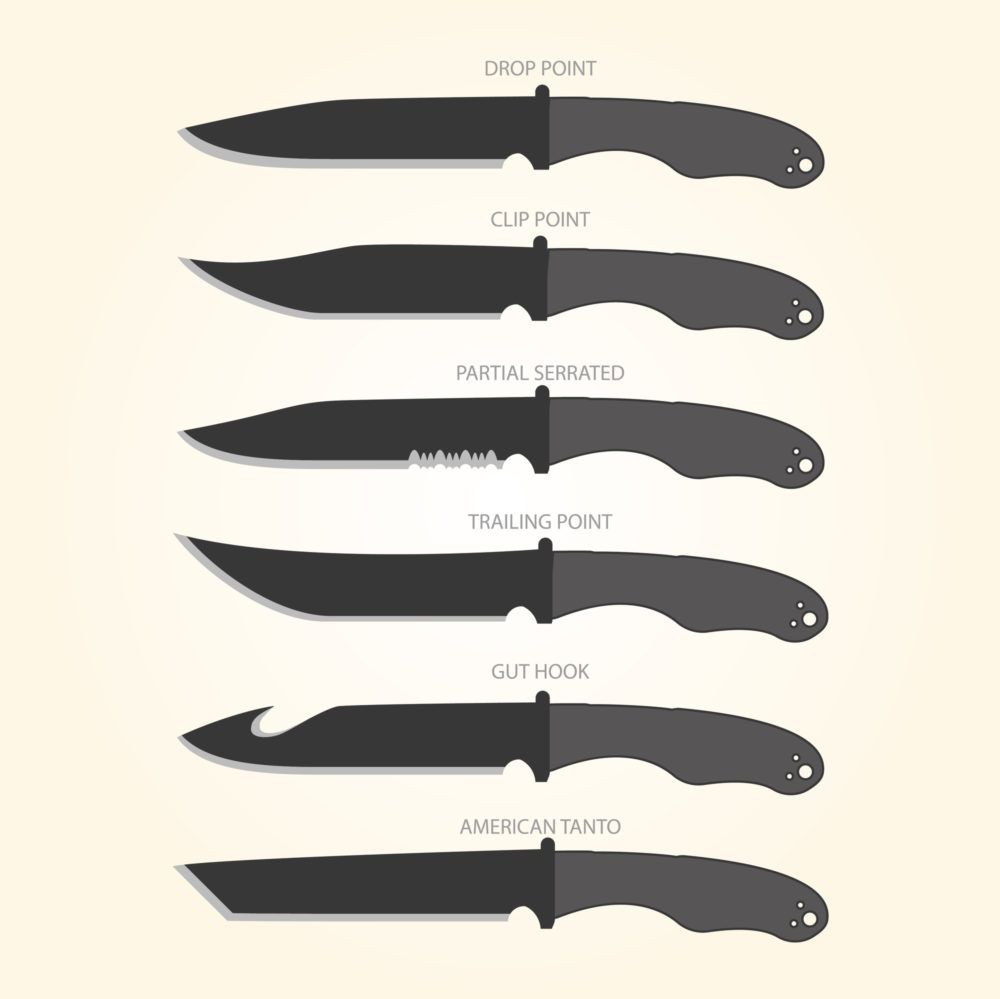
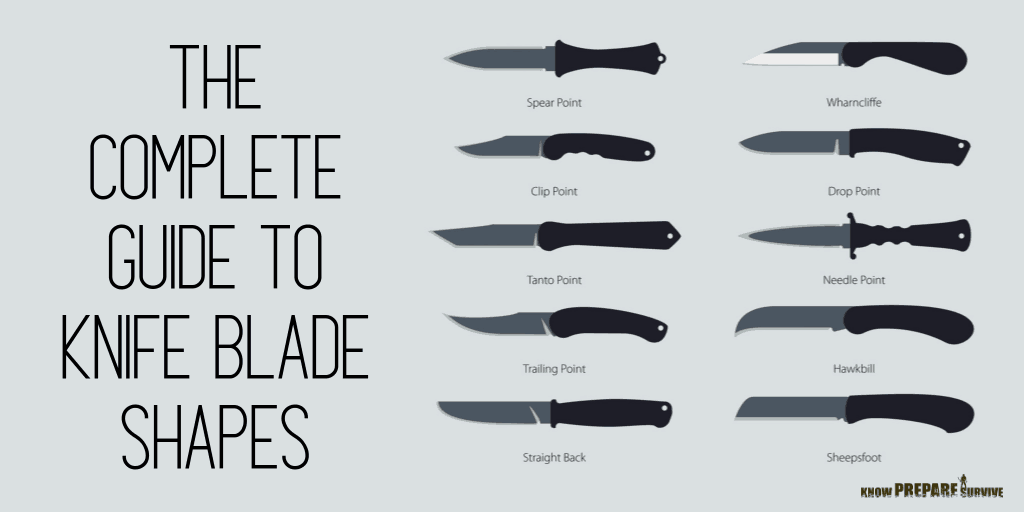
Knife Materials
When considering field knife materials, there are some handle materials and blade materials to look at and suite to your purposes. Handle materials range from traditional materials such as bone or wood, to modern materials such as plastic, glass polymer, G-10, or Micarta. The field knife needs to be used in all conditions with sometimes abusive use. As such, materials such as G-10 or Micarta will serve you well. Micartas are composites of linen, canvas, paper, fiberglass, carbon fiber or other fabric in a resin. This creates tremendous durability and types using fabric such as canvas or linen micarta also provide a grip that maintains gripyness even when wet. G-10 is a high-pressure fiberglass laminate, giving the ultimate in strength and waterproofness, while sacrificing some of the gripyness micarta has.
Blade steels come in hundreds of varieties. We will discuss two of the general categories of these steels: traditional common steels and modern super steels. Common steels include steel stocks such as 1095, 154CM, AUS-8, 420HC, and VG10. These are found on most entry level knives, offering differing corrosion resistance, durability, and ease of sharpening. Modern steels will take performance up substantially, often emphasizing certain qualities such as CPM-3V’s extreme toughness, CPM-S30V’s extreme edge retention and corrosion resistance, or H1’s corrosion proofing against sea water.
Some bushcrafters will prefer softer steels arguing that it allows for easy and fast sharpening, even using improvised sharpening stones. I argue from experience that edge retention and durability are more desirability qualities in a blade. You spend less time, less frequently sharpening.
This comes with a caveat, you need to carry a sharpening stone with you. I typically carry a diamond stone as it maintains flatness and helps sharpen hard steels a bit faster. Either way, get good at sharpening your knife and be sure to oil it to prevent corrosion (unless it’s H1… rust will never be a problem). Here are some very good guides on sharpening knives:
You can get along fine in camping situations with a so-called $5 knife (knives from $5-$20), but when you spend long days for sustained periods of time using your knife, steel quality and ergonomics. Knives can make you develop blisters if they are not contoured to prevent hotspots. The extra force required to drive a quickly dulling knife through wood can create dangerous situations where slips can occur. Better steels allow your knife to do more of the work for you, conserving energy and keeping you safe.
Here are some recommended knives that have been tested and proven. There are other knives out there that are likely just as good, but not listed here because I have not had a chance to try them out or have not had a friend with good experiences with them. You will only be buying one knife. This is a tool that you will use a lot when field crafting, so invest in quality.
- Morakniv Bushcraft - $40
- Morakniv Graberg - $80
- Ontario RAT-5 & RAT-7 - $80
- ESEE-4, ESEE-5, ESEE-6 - $90-$130
- Ontario Blackbird SK-5 - $165
- Bark River Aurora, Bark River Aurora 2 - $180-$262
- Benchmade 162 Bushcrafter - $210
- Bark River Kephart - $220
- Benchmade 202 Leuku - $220
- Bark River Bravo 1, 1.5 Field, 2 $200-$300
The cheapest knives you can get that will work decently for survival are the Morakniv Basic 511 and the Mora Companion. These have decent steel, but have a rounded spine, making the task of striking ferro rods much more challenging. For $8, you can’t go wrong having a couple of these or using it as your first knife to practice with.
What about folding knives?
Folding knives are great tools as well, for every day carry or for tasks around camp. They are just less robust for sustained field use and are typically better suited for smaller, finer tasks. You can definitely find that one will suite you for these kinds of tasks. Folding knives are also very compact, which makes carrying one at all times easy. This makes them an awesome backup if your primary knife is lost or has to be abandoned in a hasty retreat.
Be sure to get a folding knife with a durable locking mechanism. Here you can see a comparison:
Here are some tested tough folding knives to consider:
- Ontario Rat 1 (3.5″) or Rat 2 (3″) - $25-$40 - Honestly a great affordable knife that will serve you well for years to come! Anything else you are just upgrading steels, locking mechanisms, or blade shapes.
- Spyderco RockJumper (2.83″) - $85
- Spyderco Para 3 (3″) - $110-190
- Benchmade Bugout (3.24″) & Mini Bugout (2.9″) - $110-$160
- Spyderco Paramilitary 2 (3.44″) - $160-$220
Machetes
Machetes are long broad bladed knives 12-18 inches long and made of thin steel, usually less than 3mm thick. This makes these blades slice cleanly through vegetation and weighs very little when compared to an axe. Machetes are good for places where vegetation is less densely construction. Machetes are useful for cutting into soft woods, cane, vines, saplings, palms, and for clearing away sticks/branches. They also can find use in more northern hardwood and pine forests when limbing trees and shaving bark.
Machetes are simple implements that have taken form in warmer latitudes around the globe. Some notable types include the Philippine bolo, Malay parang, Indonesian golok, Brazilian facão, and the ubiquitous central American machete.
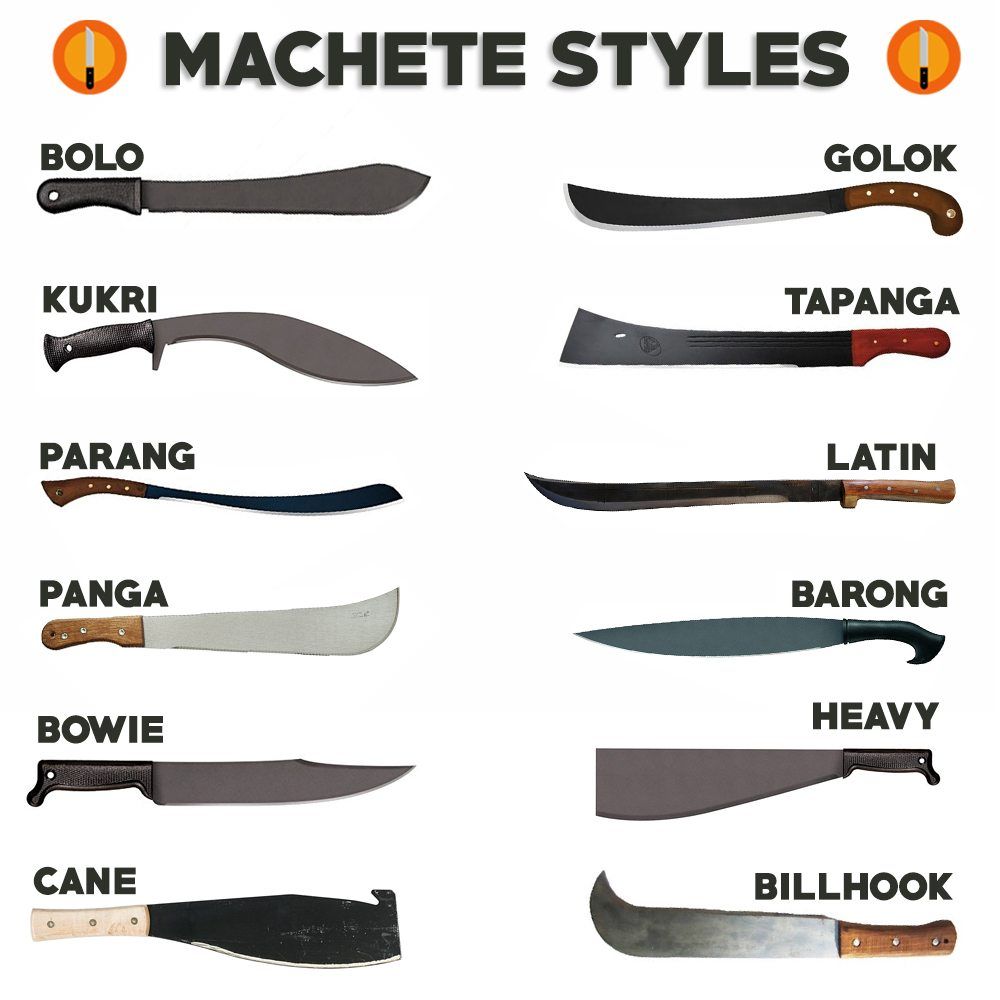
Columbia is the largest producer of machetes in the world. One of the best ways to experiment with what works with your local vegetation is to get a multi-pack. These give you five different styles for around $40. Enough that you can share with your comrades or do a very affordable group buy (here’s an example: Columbian Military Machete 5 Pack
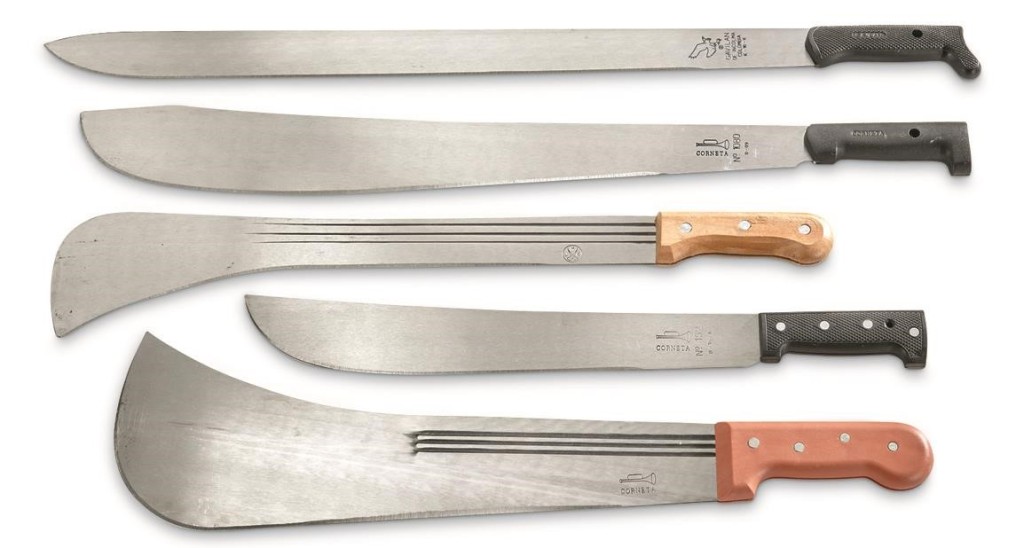
In my experience, the best machete for the money is the Ontario 18” Military Machete (also available in 22” blade for bigger people or more tropical environments). The blade is thick enough to remain stiff, making easy work of reeds and soft woods alike. They are easy to resharpen and have extremely durable handles. These are about ~$20 and worth every penny.
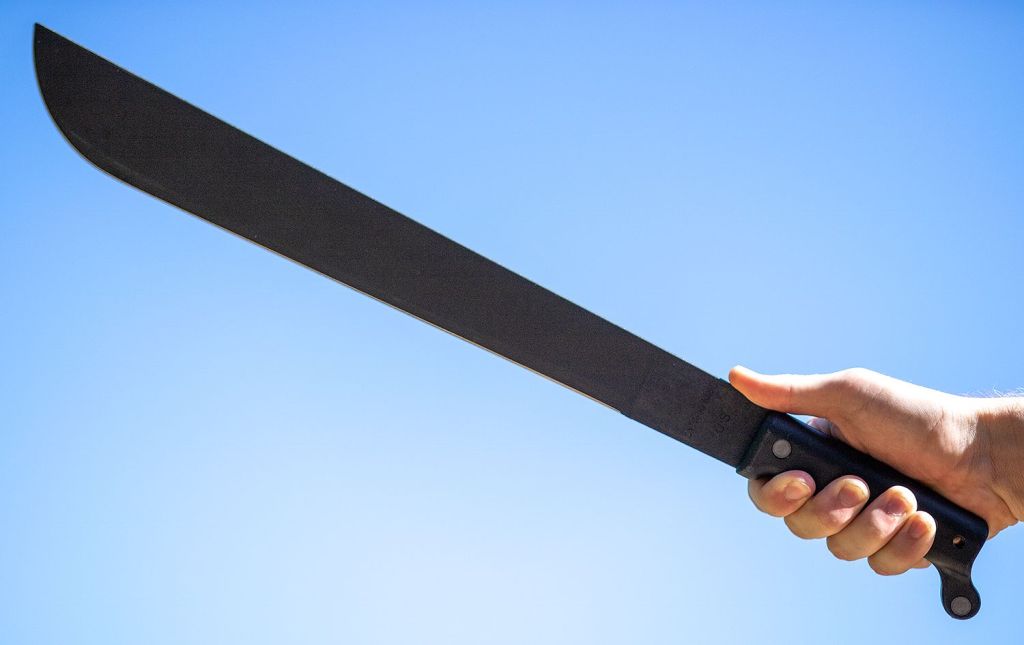
Axes
Axes are powerful tools for the right use and environment. If cutting into hard woods or pine, they are excellent for felling and limbing. They are also excellent for splitting wood into more manageable sections. They also are good hammers for stakes and have sharp edges that will help with striking a fire. They are a high energy tool that can do a lot of work on their own, but are better employed as a part of a system. For field craft, a small axe is the best all around type of axe to select. Hatchets lack the versatility and power of a small axe, while large felling axes are too heavy to be a part of a light weight & mobile survival/field crafting setup.
Choosing an axe that is quality will also make an extreme difference to your ease of use. Most axes you find at outdoor & hardware stores these days are crap. They are cast steel instead of forged and their heat treating combined with inferior materials means they dull extremely fast. A sharp axe is a good tool to use. A dull axe is an extreme waste of energy. Another area where modern axes tend to fail first time buyers is in the handle quality. Improperly set & wedged, covered in lacquer, and made from less than ideal woods, these handles will be a sore spot (literally) for users.
There are two options for the perspective axe buyer who wants to buy a lifetime tool. The first is to buy from one of the modern quality manufacturers. Notable axe makers and models recommended are:
- Council Hudson Bay Camp Axe - $70 (Will require you to hone/sharpen the blade and possibly replace the handle.)
- Hults Bruk Akka - $179
- Hults Bruk Aneby - $159
- Gransfors Bruk Small Forest Axe - $153
The second option saves you a lot of money, but requires you to do some searching and some labor. First you need to find a quality axe head at an antique store, flea market, or swap meet. You are going to look for a head that is 1.5lbs-2lbs in weight from a quality maker such as Kelly, Plumb, Zenith and Sager, Norlund, Collins (pre-Mexico), Snow & Neally (pre-China), Keen Kutter, Belknap, Warren and Mann, Emerson & Stevens, Peavy Mfg., or Witherell. You want a blade without any major chips and without fire damage and you want the striking face to be free of any mushrooming. The whole head should not have any cracks; if you see a crack, walk away. Rust and even pitting are ok. You will then want to get an axe handle from Hults Bruk or Gransfors Bruk, 18-26” in length. Here are some useful videos about restoring axe heads and hanging handles:
Saws
Saws are limited to one task, cutting through wood. They are primarily used to fell small-medium trees and section wood into logs for splitting. When cutting through the whole trunk of a tree, saws are the most energy efficient way to get the job done. When looking for a backpacking saw you want three primary characteristics: A pull saw style blade, sharpenable or with a replaceable blade, and folding blade protected provided by the handle.
Pull saws are very energy efficient saws, allowing you to use your whole body in the sawing motion. These are typical of Japanese style saws, though the pull saw has begun to catch on in the rest of the world in the past few decades. European style saws are push saws, meaning they cut into the wood when you push the saw blade forward through the wood. These require more focused use of the arms and shoulders, causing fatigue more rapidly than pull saws.
Pull saws are almost universally replaceable-blade saws. This allows them to be made of thin material with exceptionally hard teeth that last for a long time. They can not be resharpened, so be sure to keep spare saw blades handy (in the back-country, just one spare blade should last you a few months of continuous use). You should pick your blade length to be ⅓ longer than the diameter of the trees you expect to be cutting. If you are going to cut ~9”(228mm) trees, you need at least a ~12”(300mm) blade. Smaller saws are lighter and easier to carry. Larger saws expand the size of the wood you can cut and the speed at which you can cut. Long strokes cut faster and more efficiently than short strokes.
Folding pull saws often work in much the same way pocket knives do, folding back into the handle. European bow saws can be found in collapsible form, but can be more difficult (only marginally) to assemble and take down each time you need to use it.
For pull saws the following recommendations are tried and true from smallest to largest:
- Silky GomBoy
- Silky Professional BIGBOY 2000
- Silky KATANABOY Professional
If you are interested in building a european bow saw with some axe handles, here is an excellent demonstration of a very practical saw that allows you to bring spare axe handles for your axe. Excellent redundancy!
Conclusion
At the end of the day, try to buy something quality, maintain it, practice with it, and keep it sharp. Figure out what works best in your environment by getting out there and building survival shelters, laying concealment, starting fires, and preparing plants/animals for meals. The better you know your knife, your saw, your machete, and/or your axe, the better prepared you will be to use these tools in dynamic survival situations.
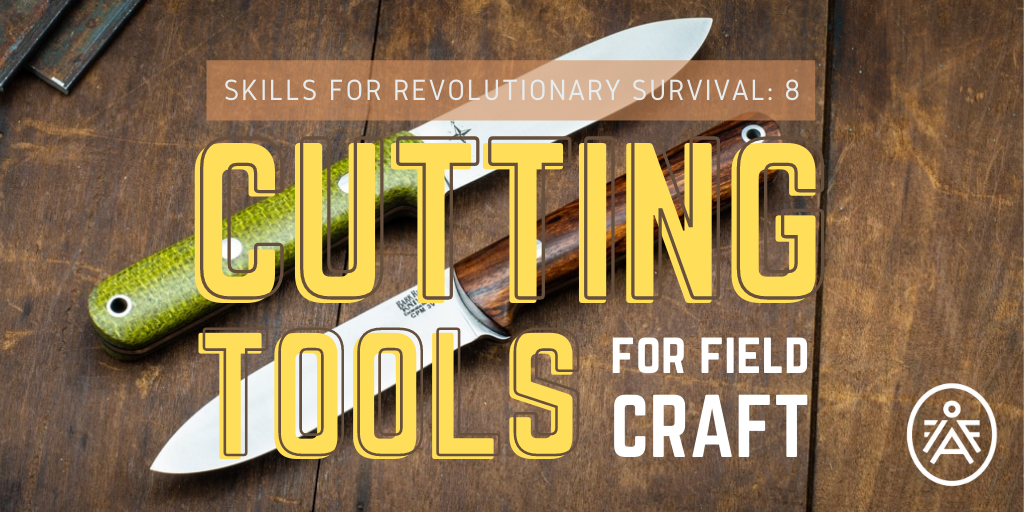
One thought on “Skills For Revolutionary Survival No.8: Cutting Tools for Field Craft”
Comments are closed.